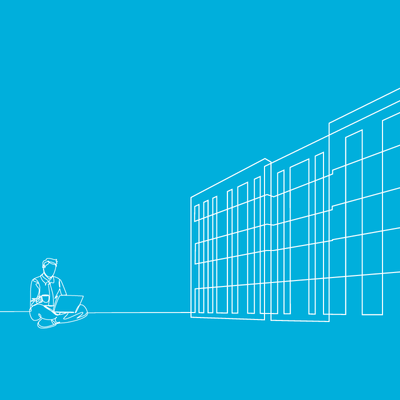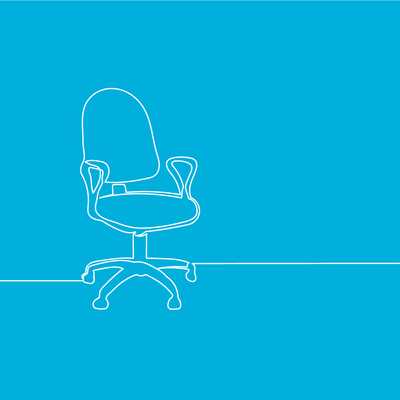development-engineering
Alleviate Video Call Fatigue With These Top 5 Tips
Many of us are working in a virtual office these days. For professionals working in the technology sector, that might mean more time in front of the camera than you signed up for. Even those who usually have the verve and stamina to withstand back-to-back meetings may experience video call fatigue.Why the video call fatigue?Evolving from social animals, most human communication is non-verbal. In face-to-face conversations, we gain additional meaning from the way people act. We read each other’s hand gestures, body language, and facial expressions to pick up social cues and infer meaning. For most people, it takes little conscious effort to analyze these cues. In real life, we know if someone is fidgeting or looking away frequently that it may be time for a break. Video calling can compromise these deep-rooted skills; the video quality might be poor due to a lousy internet connection, or the person might only be partially in view so you cannot read their posture on hand gestures. Unlike real-life conversations, video calling can require sustained and intense attention to glean meaning. Predominately relying on verbal communication is tiring, according to a study conducted by Marc-Andre Reinhard and Siegfried L. Sporer, creating video call fatigue.Video calling can also force the current public health crisis into the forefront of our minds; prompting anxiety and fatigue. Gianpeiero Petriglieri, Associate Professor of Organisational Behaviour at INSEAD, argues, “The video call is our reminder of the people we have lost temporarily. It is the distress that every time you see someone online, such as your colleagues, that reminds you we should really be in the workplace together.”If you find yourself growing tired from back-to-back video calls, try one of these top 5 tips: 1. Reduce the number of faces A conference call can magnify existing issues with video calling. Commonly used video conferencing software can allow tens to hundreds of people to simultaneously share their video. This forces the central vision of the brain to decipher so many people at once that it can be difficult to concentrate and understand the speaker. Writing in the National Geographic, Julia Sklar says that “the brain becomes overwhelmed by unfamiliar excess stimuli while being hyper-focused on searching for non-verbal cues that it can’t find.” If you are attending a presentation, ask the speaker if they can turn off everyone else’s video. For re-occurring group calls, communicate to whoever is leading the meeting that you are experiencing video call fatigue. Ask if a rule can be set that video is not required, or that callers take it in turns to turn their video on when they are speaking. 2. Create different spacesThe context of our different social roles has collapsed. Today, we meet our colleagues, partners, parents, friends and employers in the same space – our computer window. This phenomenon—known as context collapse—happens when different aspects of our lives that are normally physically detached are combined to blur separation boundaries. In turn, context collapse can have negative psychological effects and the attenuation of self-identity. This is also why video calls with friends and family can also be tiring; they become associated with work and obligation.Now more than ever, we need to find ways to create buffers between different aspects of our lives. Our environment affects our decision-making and our concentration. Research finds that a work environment activates cognitive resources and association relating to work behavior; increasing decision-making abilities and concentration. If you can, create different spaces at home for your personal and professional life – even if that just means changing ends on the kitchen table or never working from the couch. Likewise, try to avoid answering text messages from friends or family during work. Creating transition periods between video calls will also prevent fatigue. Whether doing a bit of exercise, making a drink, or stretching – try a new activity between calls to help refresh yourself. 3. Give your eyes a breakWe hardly blink when we stare at screens compared to face-to-face interactions. One study found that blinking decreases by 66% from an average of 18 blinks per minute. This can cause our eyes to get more dry, irritated and tired than normal in what is known as ‘computer vision syndrome’ or digital eye strain, which 60-90% of office workers suffer varying degrees of. Other signs to look out for are blurred vision or tensions headaches. What can do you do to combat it? Try the ’20-20-20’ rule: every 20 minutes take 20 seconds to look at something 20 feet away. If you’re not sure of distance, just try and find something that is furthest from view to focus on. It’s also recommended that you take a break from all your digital devices every two hours for 15 minutes so that your eyes can have a rest. Try to position yourself where natural light is not reflecting harshly on your screen. If that isn’t possible, ask your employer if they can provide anti-glare filters; removable panels that fit over your computer screen and help prevent glare. 4. Turn off your cameraUnlike real-life conversations, video calls force you to stare at your own face for long periods of time. For some, this can be an unwelcome distraction by causing worry about your own appearance or how you are coming across. According to media and business psychologist Charlotte Armitage, “The additional psychological processing involved in attending to one’s own behavior and actions, as mirrored by the online platform, can be draining for a whole number of reasons. At the very least, it adds an additional level of stimuli that you wouldn’t have had in a face to face meeting.”Consider switching off your video, particularly if you are in listening mode or are being presented too. Several studies show that people listen more attentively to phone calls and also experience less stress, as it more closely mirrors a real-life conversation rather than feeling they are giving a performance. If you can’t turn off your camera, consider moving your screen off to the side, instead of straight ahead. This can help you concentrate better by focusing on listening rather than watching. 5. Ask if a task really needs a meetingUltimately, the only way to prevent video call fatigue is to reduce their amount. Next time you are about to schedule a meeting, or are invited to one, ask yourself if this needs to be a video call. In fact, does this task need a meeting at all? Not all decisions require a meeting, so think whether you can move a project forwards via email, chat, or even a quick phone call. With many of us working from home, fears about productivity, belonging, or even visibility may prompt us to get in front of the camera. Save yourself and your colleagues from video fatigue by hitting pause on those calendar invites.To learn more, download How to Ace a Virtual Interview, Being Business Critical in the New Virtual Workplace, Hiring Business-Critical Talent Through Video Interviews, or How to Virtually Onboard New Talent.
Read More













